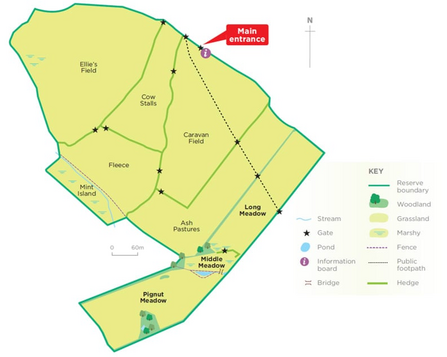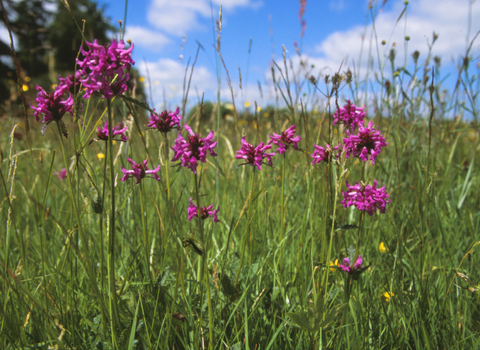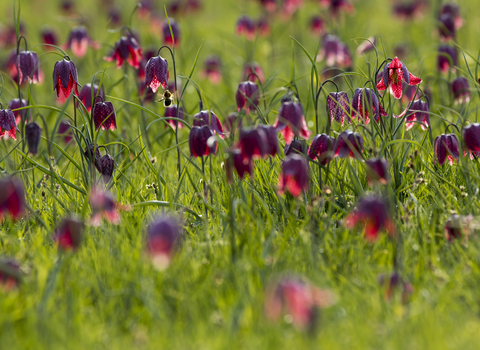A butterfly on devils-bit scabious at Emmett Hill nature reserve, Wiltshire. Credit: Eleanor Dodson.
Emmett Hill Meadows
Know before you go
Dogs
See our FAQ's for more information
When to visit
Opening times
Open at all timesBest time to visit
Spring and summer. Nearby attractions include Keynes Park (4 miles), Malmesbury Abbey (5 miles), North Meadow National Nature Reserve (6 miles).About the reserve
The first three hay meadows we acquired form a Site of Special Scientific Interest (SSSI) because of their long history of traditional farming. The purchase of Upper Minety Meadows in 2020 added 44 acres to the existing Emmett Hill nature reserve. The land has since been restored with the help of volunteers through green hay and devil’s-bit scabious plug planting to create wildflower-rich, shrubby pastures, which will support the long-term recovery of the threatened marsh fritillary butterfly.
In summer, devil’s-bit scabious turns Long Meadow into a haze of purple, peppered with betony, saw-wort, sneezewort and heath spotted orchids. Listen for the rustle of yellow rattle seedpods when you brush past them.
Long Meadow has clearly visible ridges and furrows running its length – evidence of an ancient farming system. Look in the damper furrows for ragged robin and creeping Jenny. Pignut Meadow contains an old banked enclosure that was perhaps a cattle pen when the area was open common land. White pignut flowers in May and June. Its flowers feed the larvae of the uncommon chimney-sweeper moth.
In Middle Meadow you can see some old ant hills. ‘Emmett’ is the old name for ant hill. A stream runs alongside Middle Meadow, and there are two ponds where great crested and smooth newts find refuge. Butterflies and moths include the small heath, marsh fritillary, peacock, garden tiger moth and small copper.
We cut Long Meadow for hay in July (or when a window in the weather appears) and then cattle graze it until Autumn.
Species
Contact us
Environmental designation
Map of Emmett Hill



